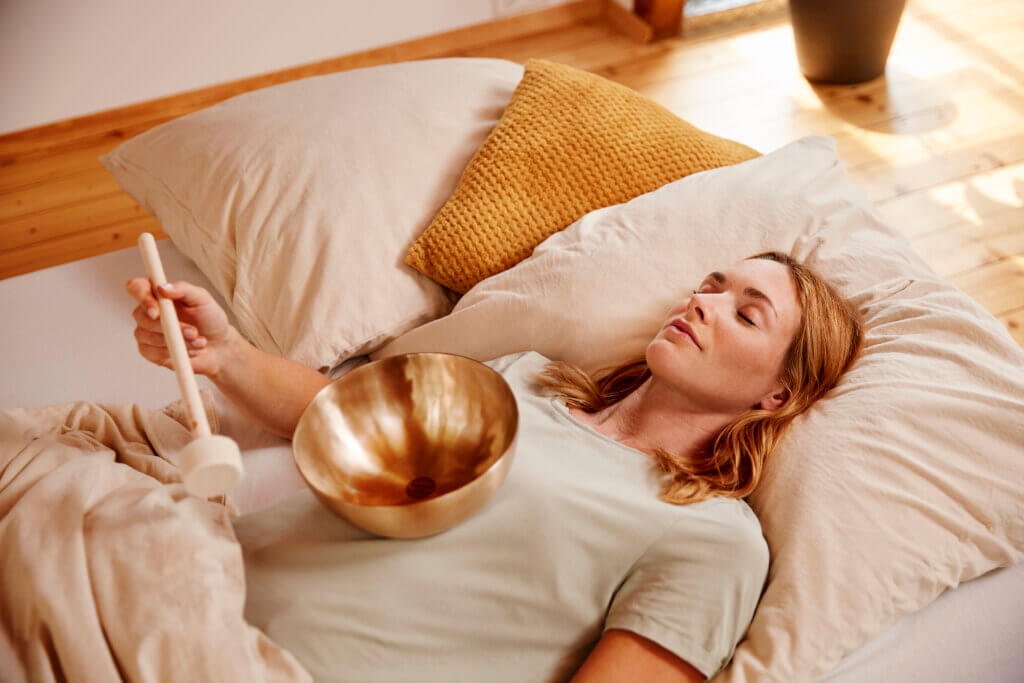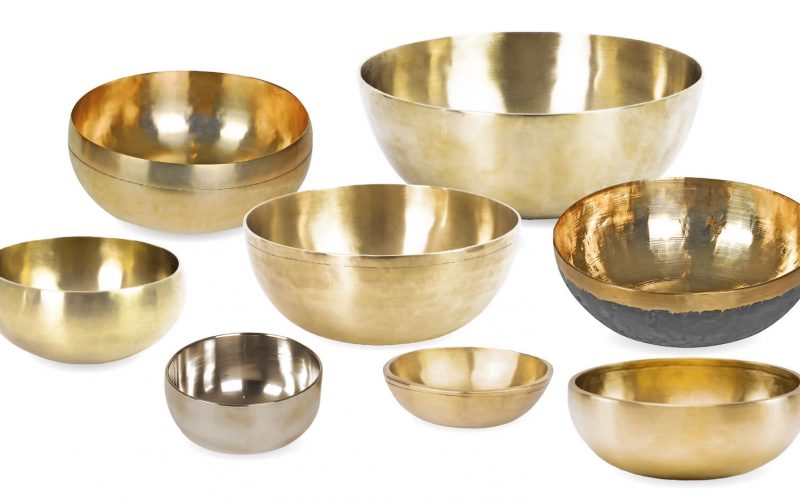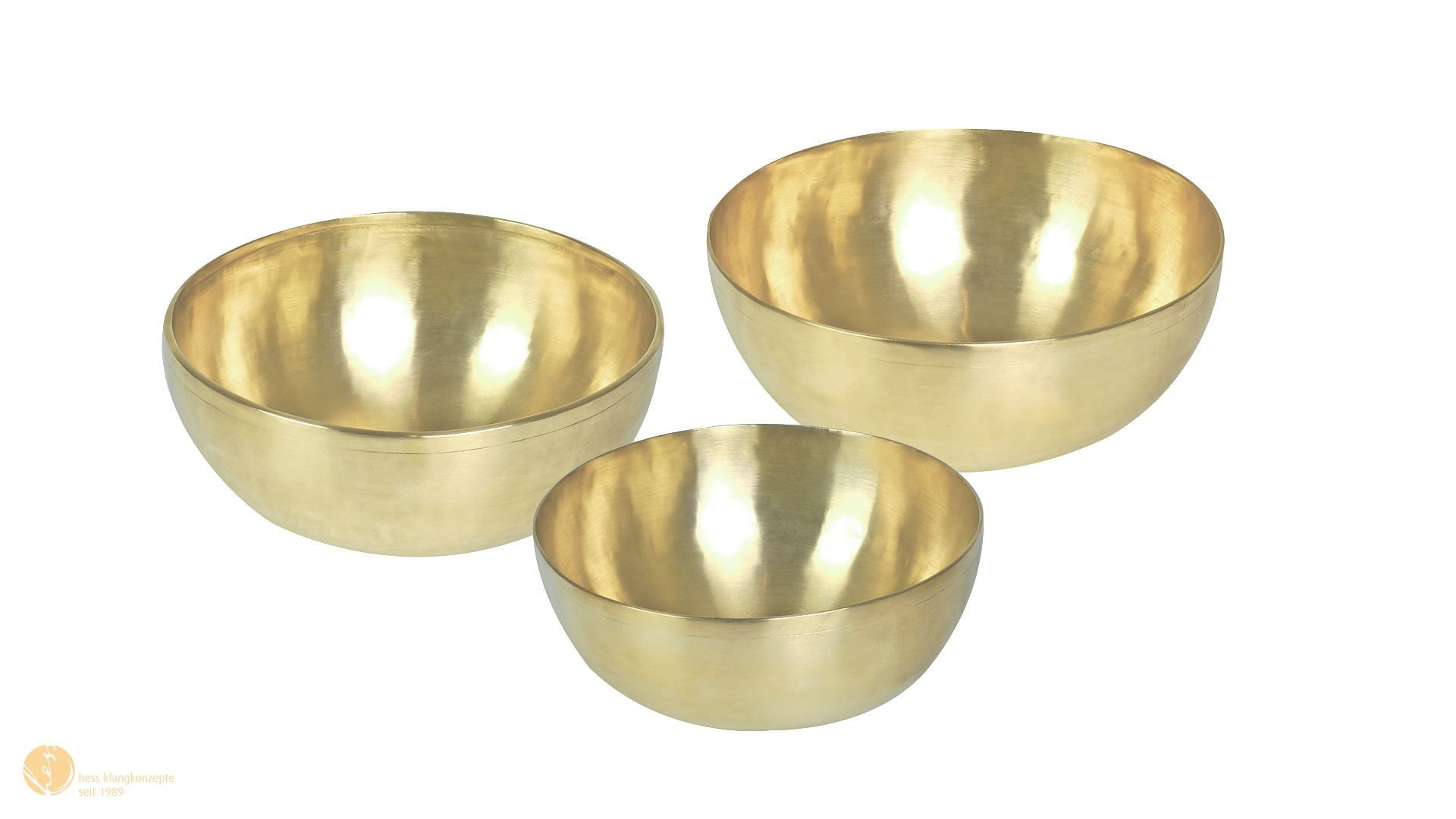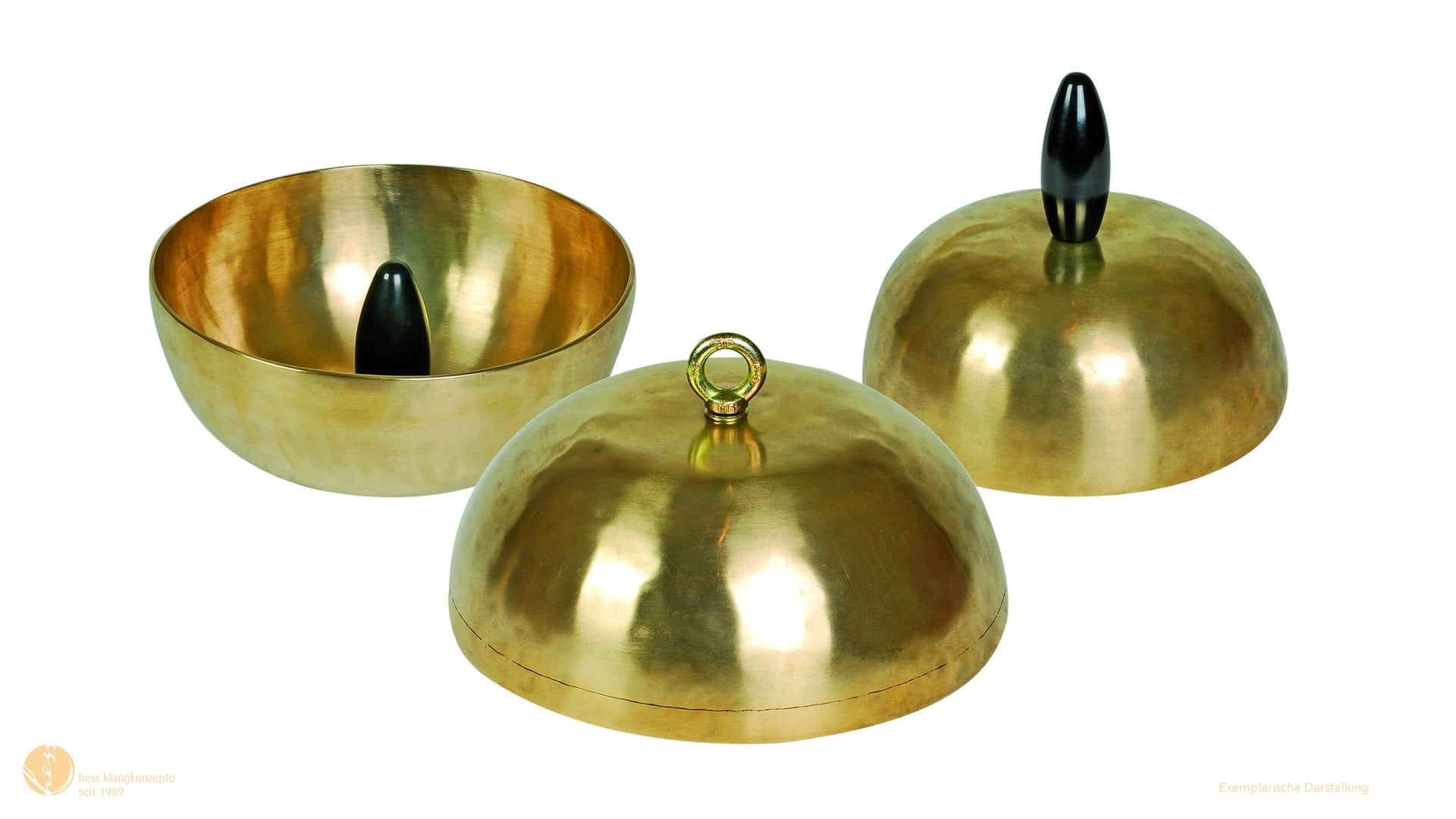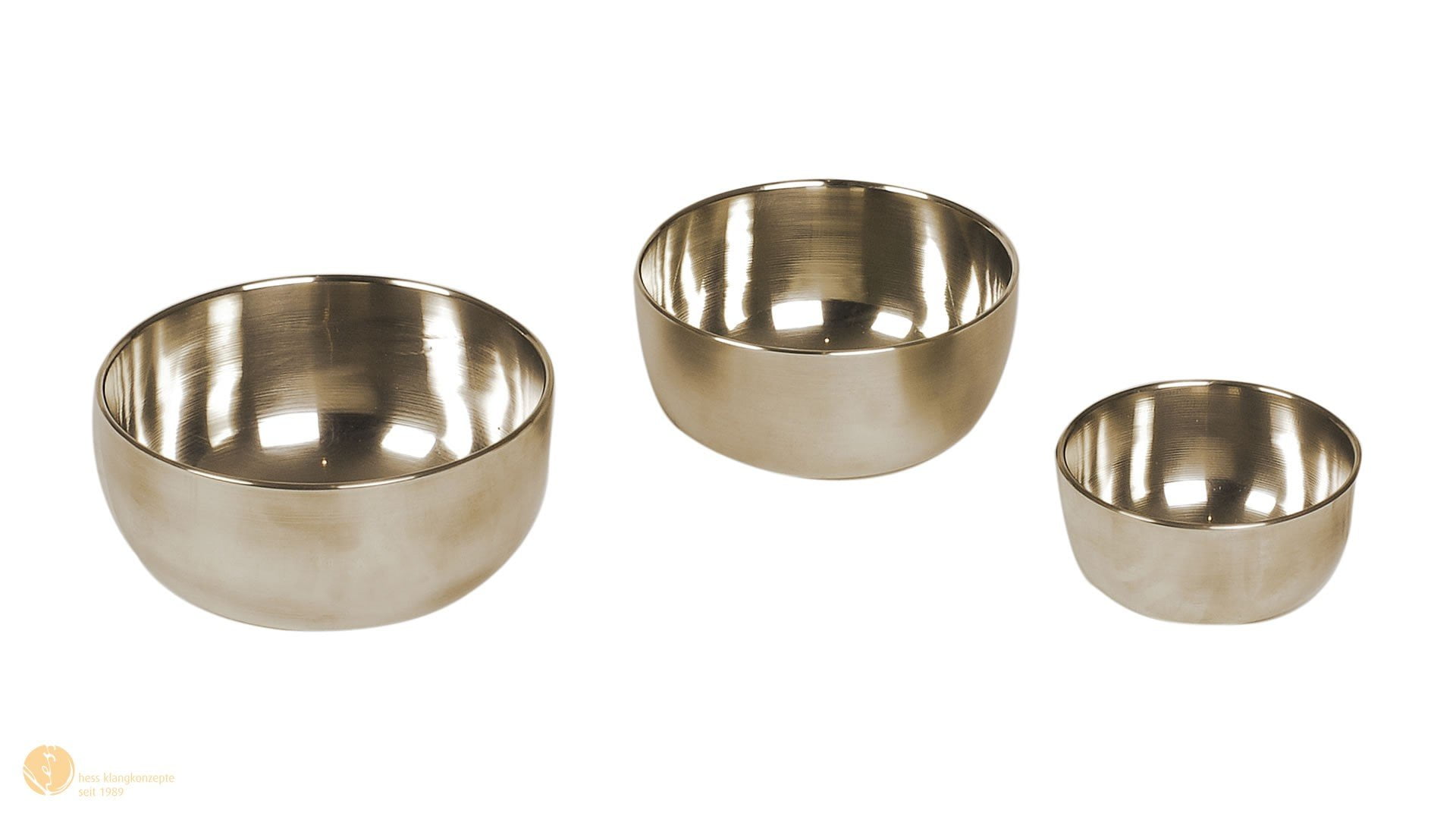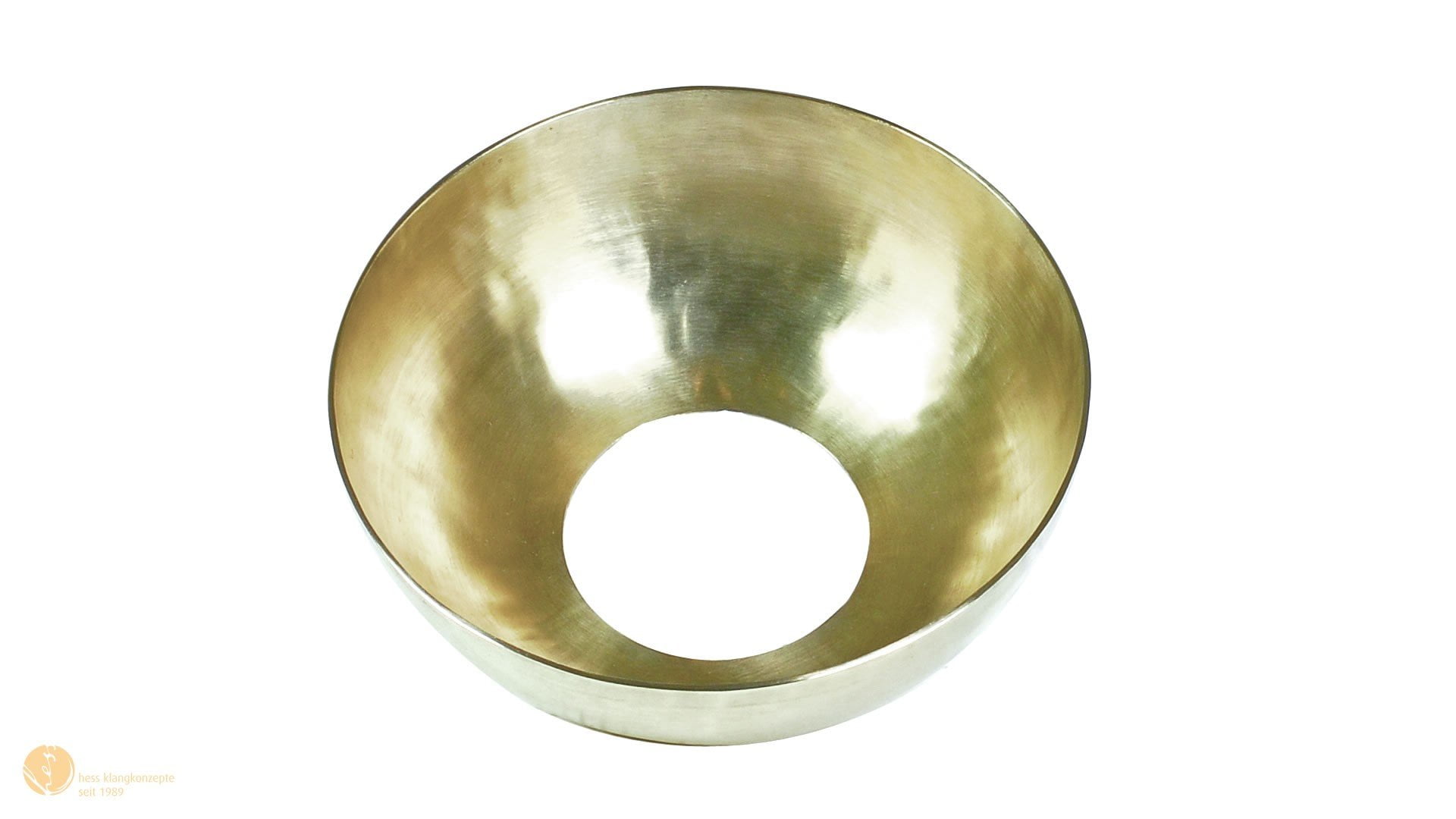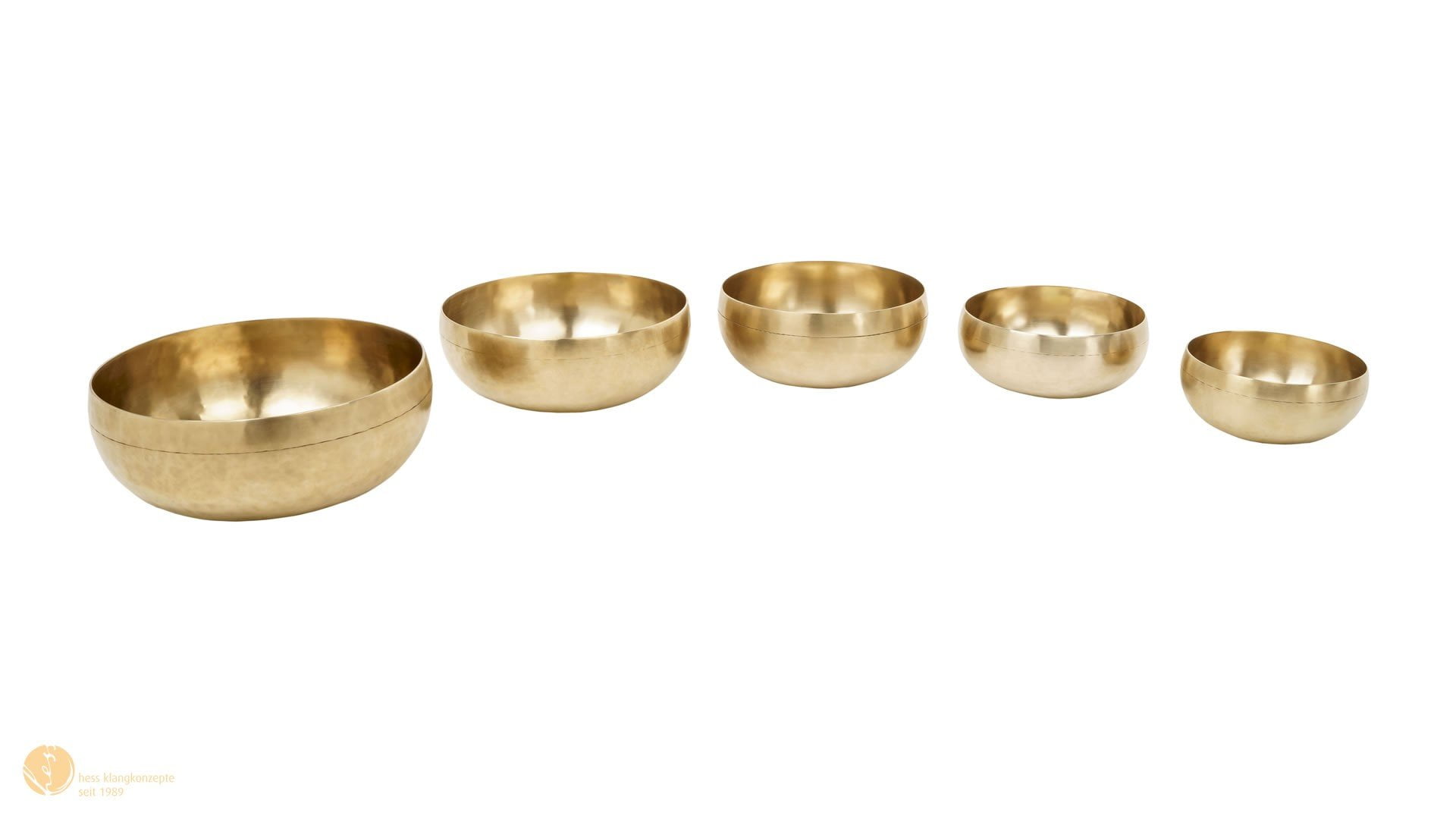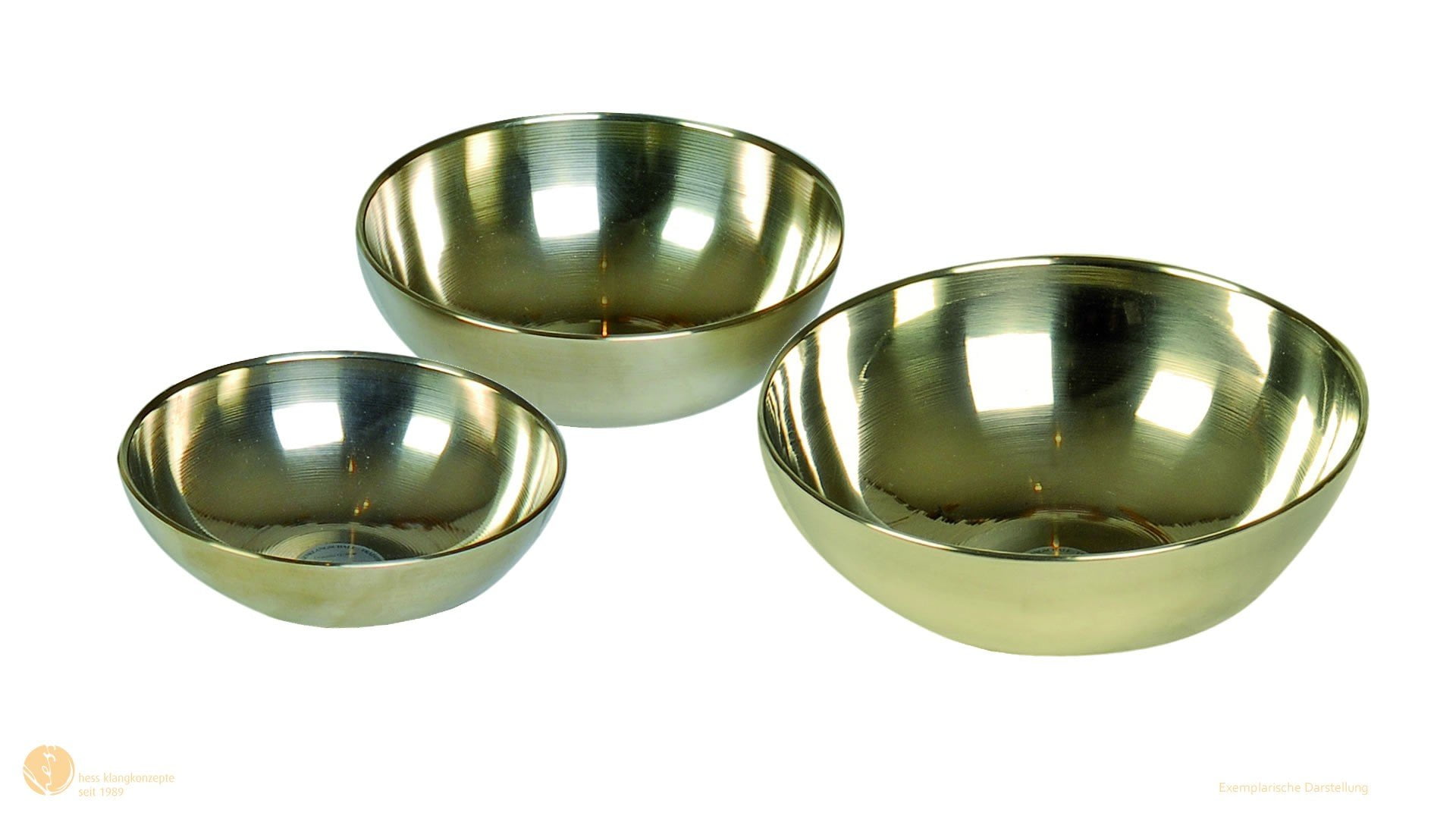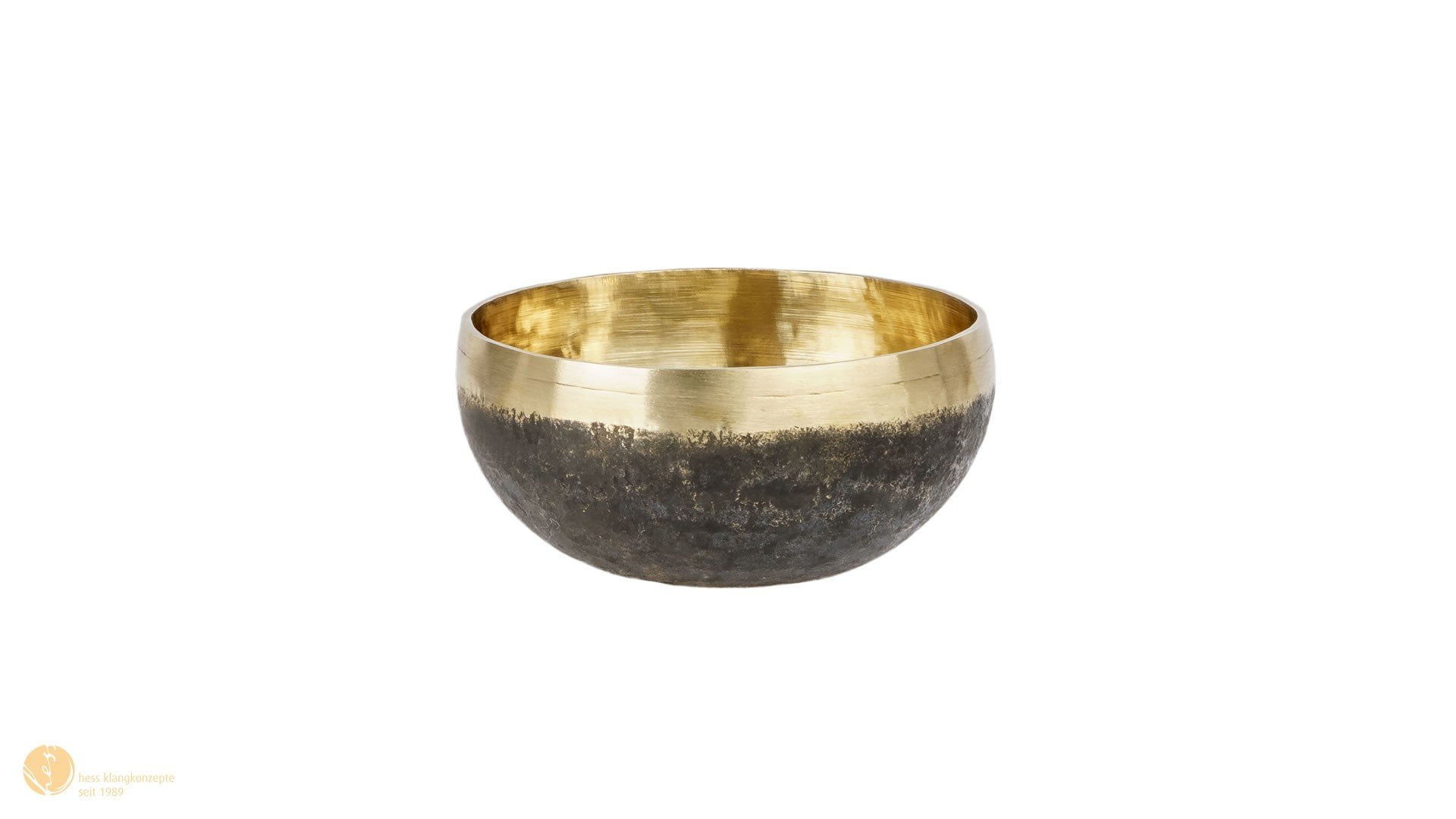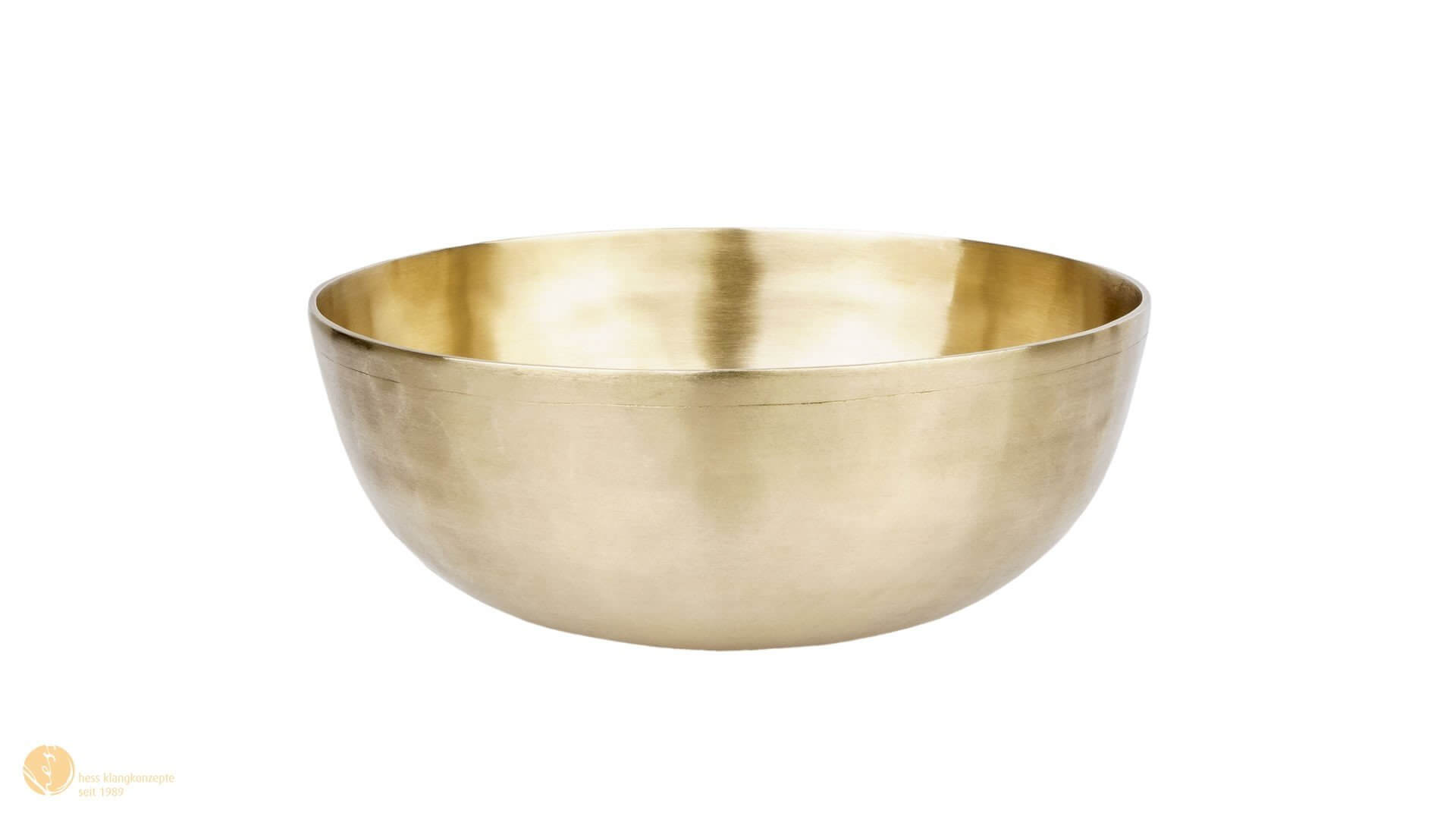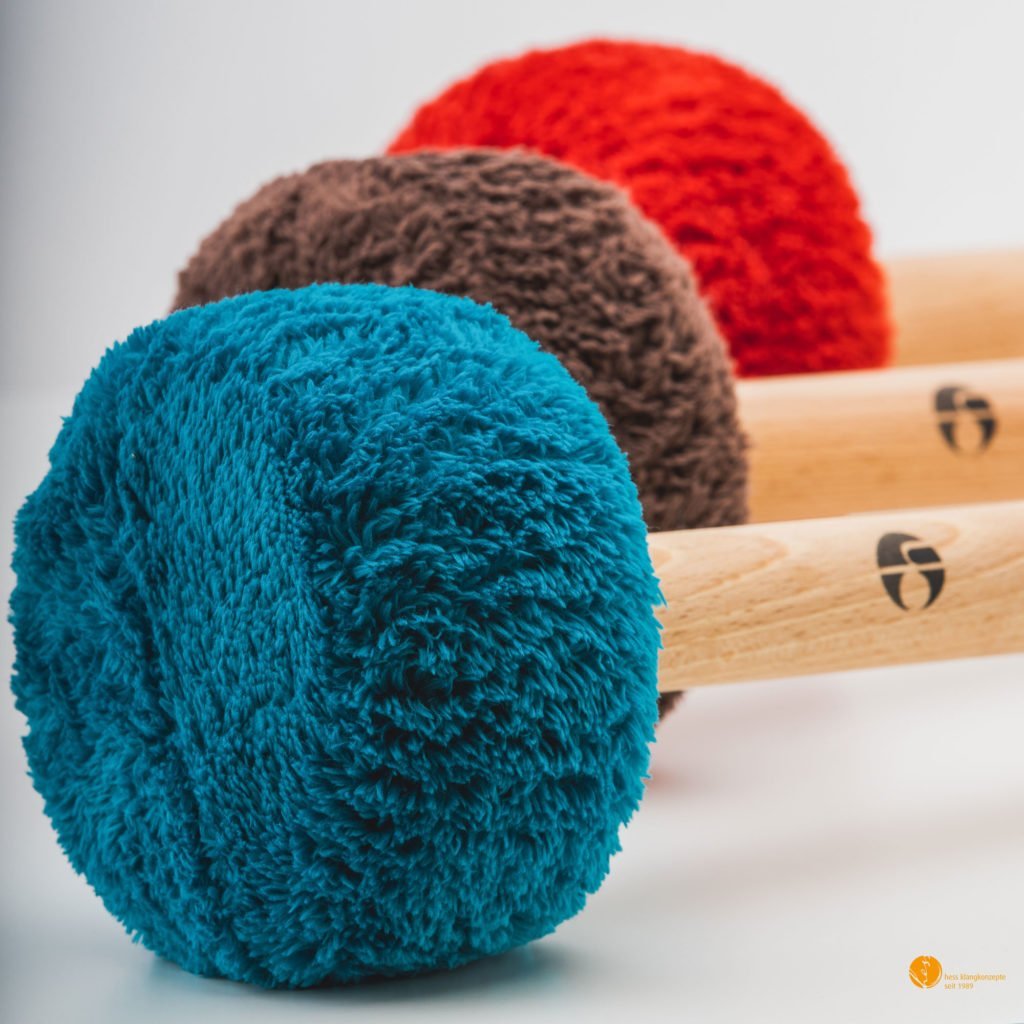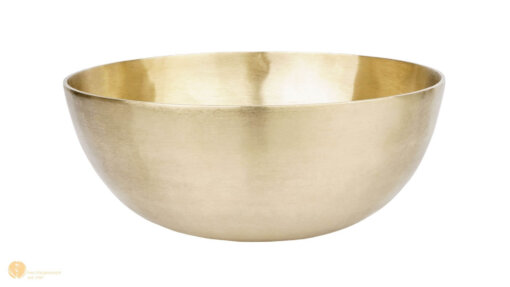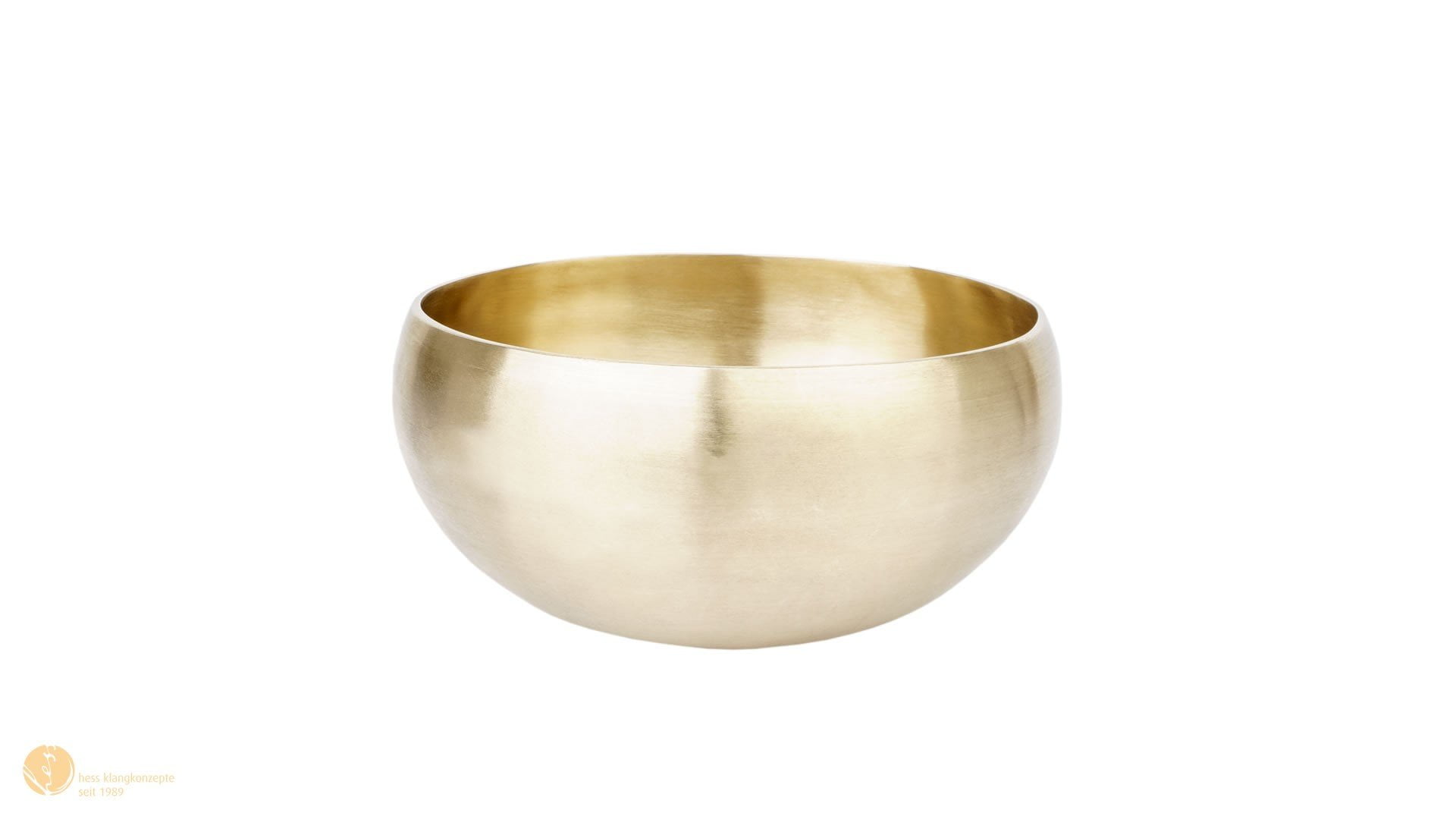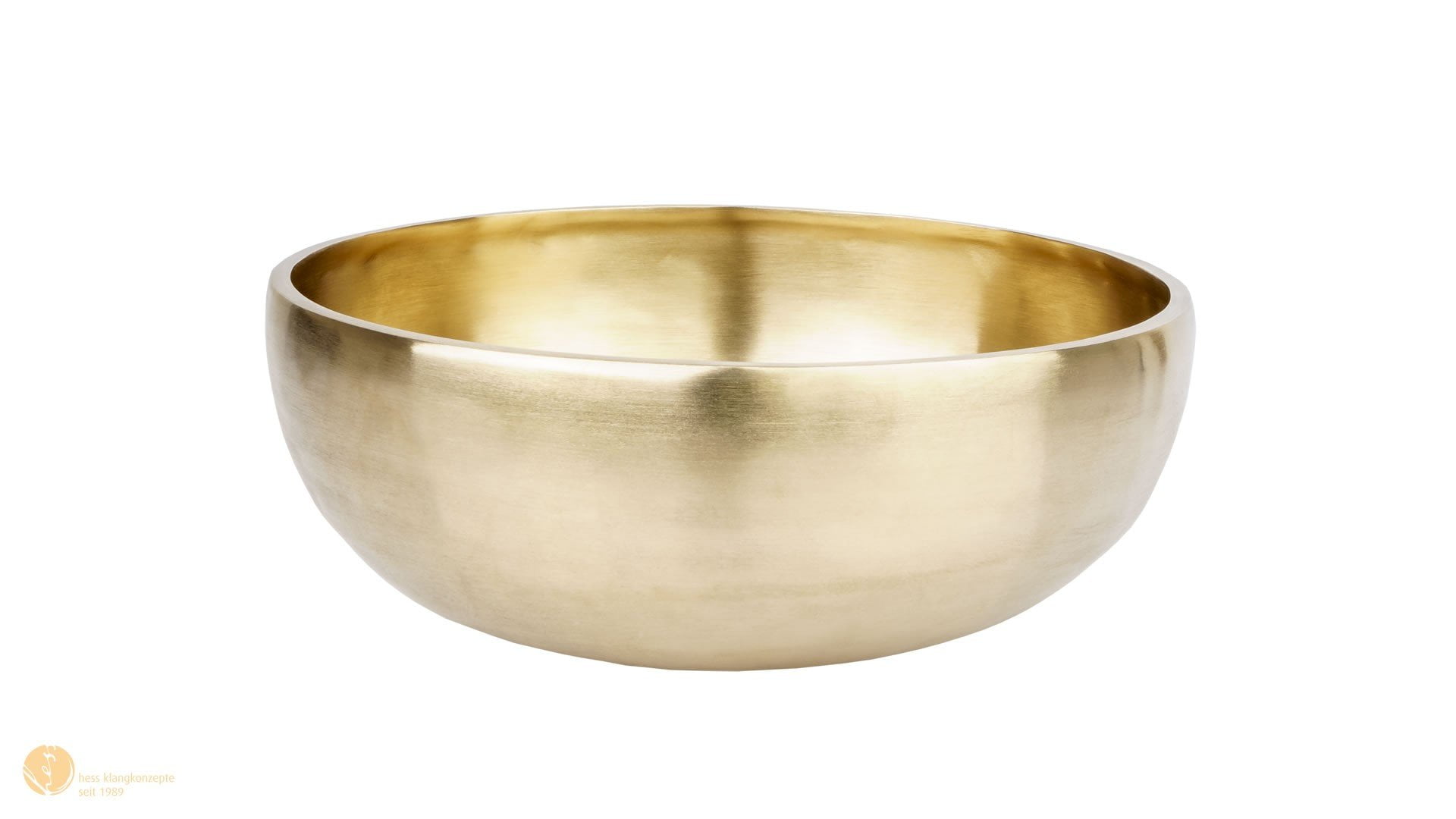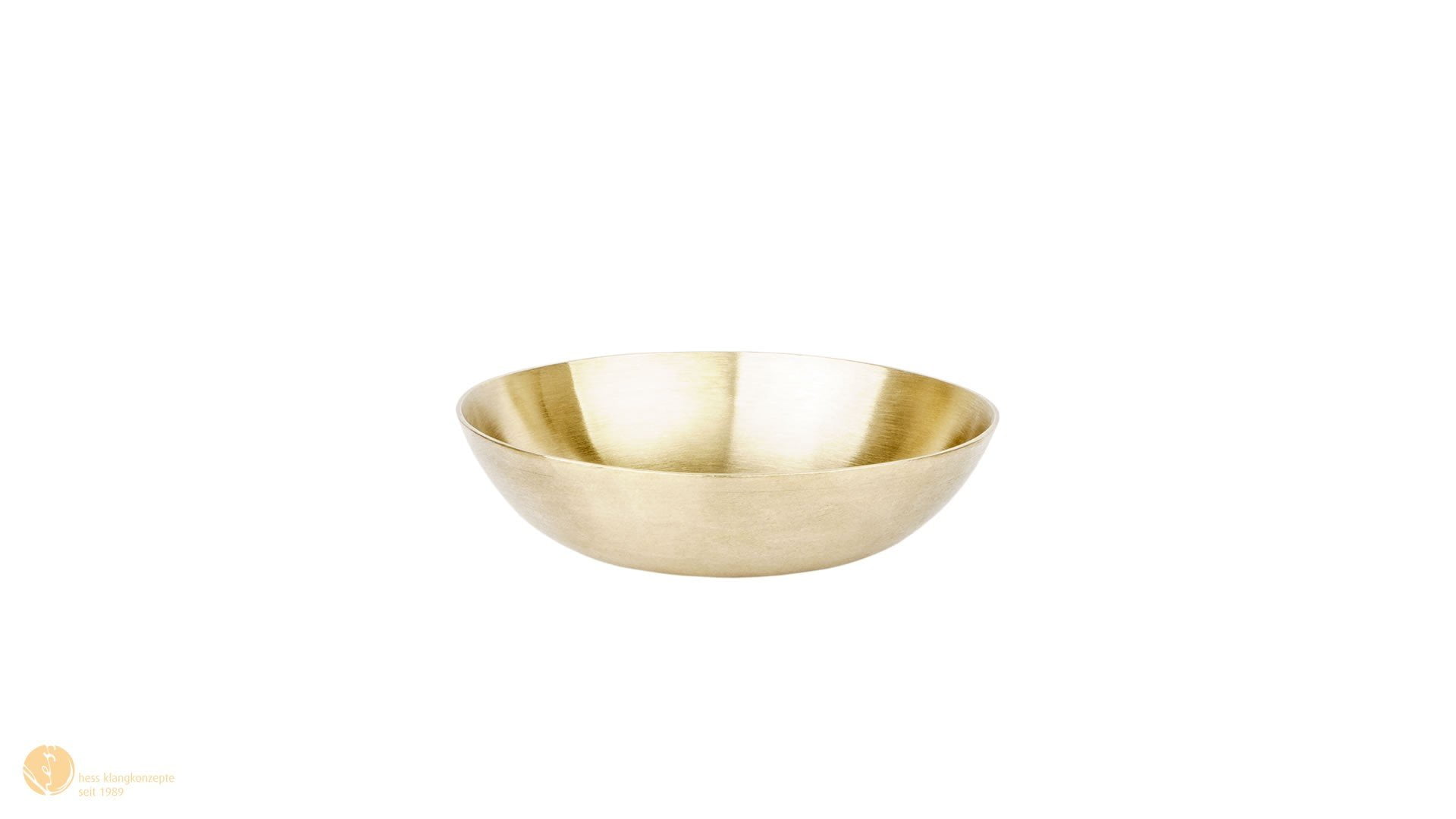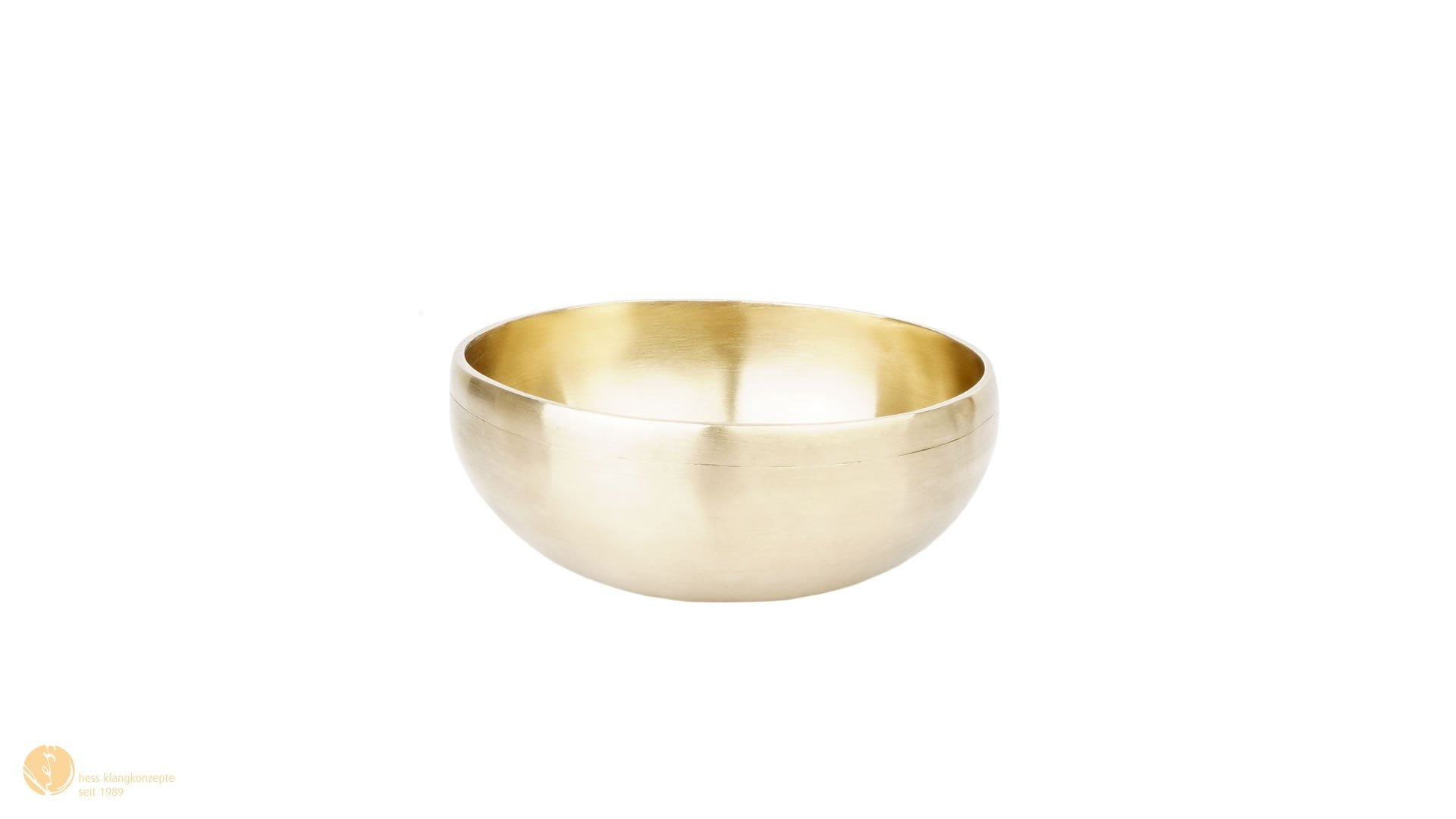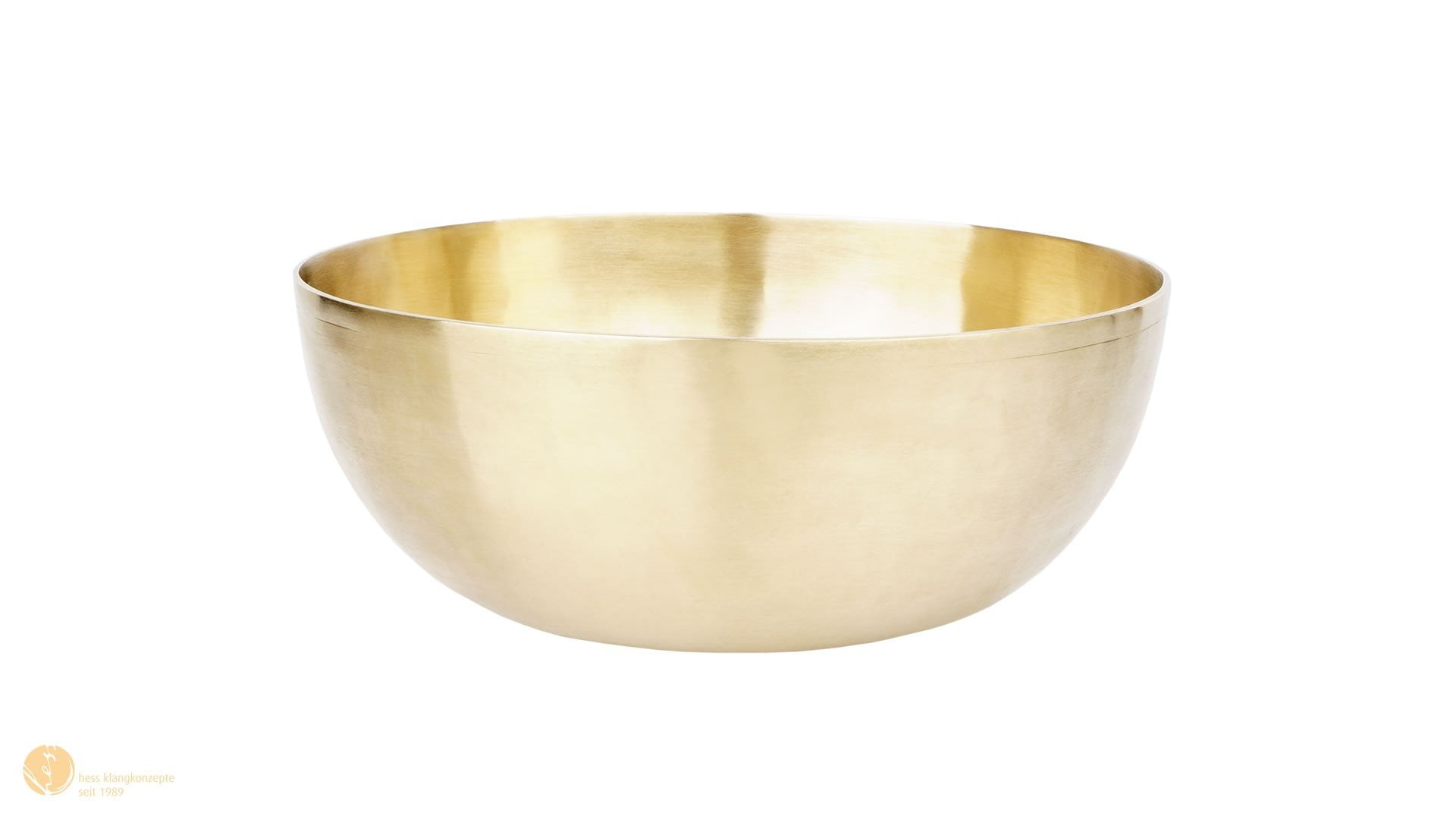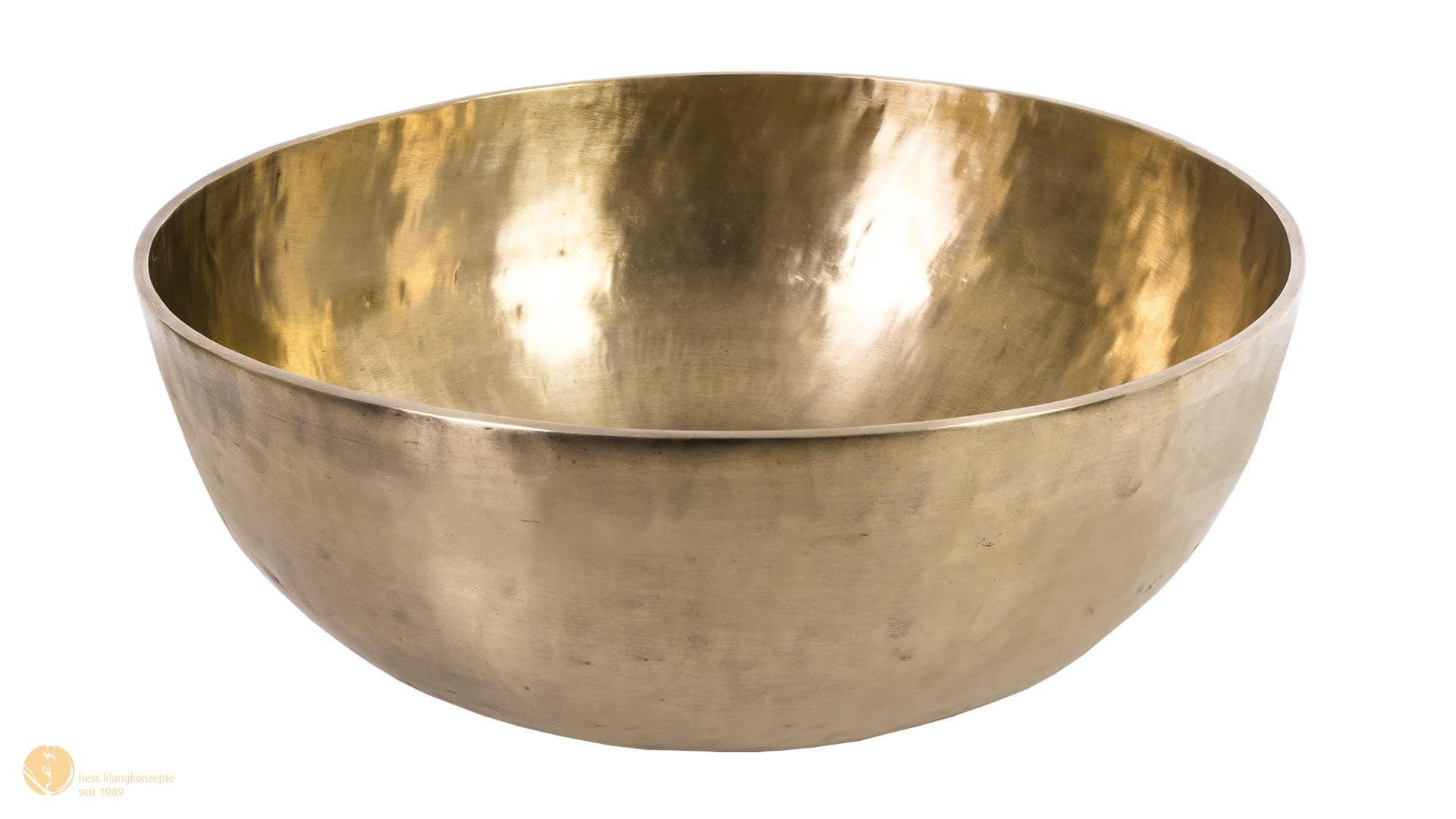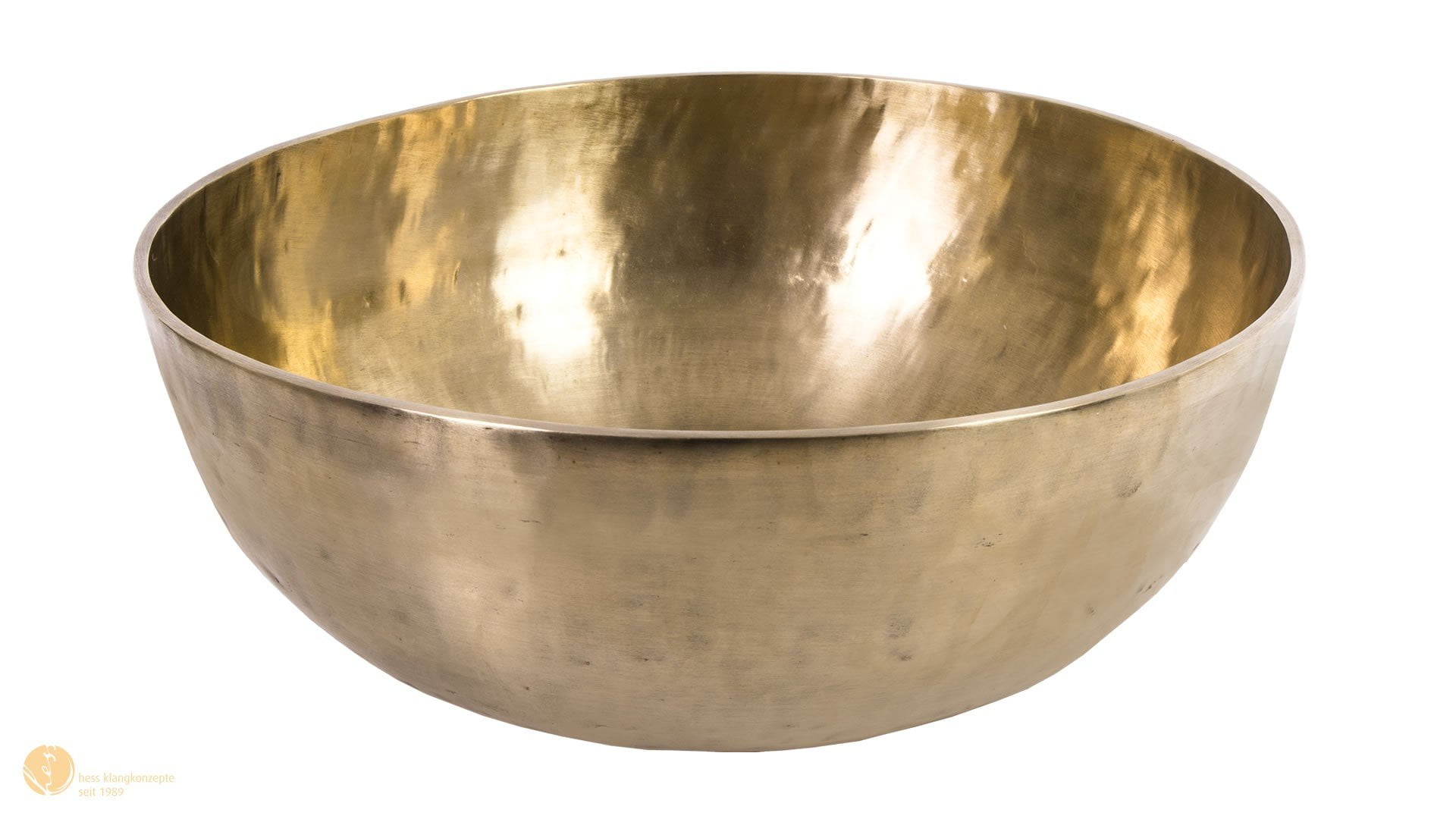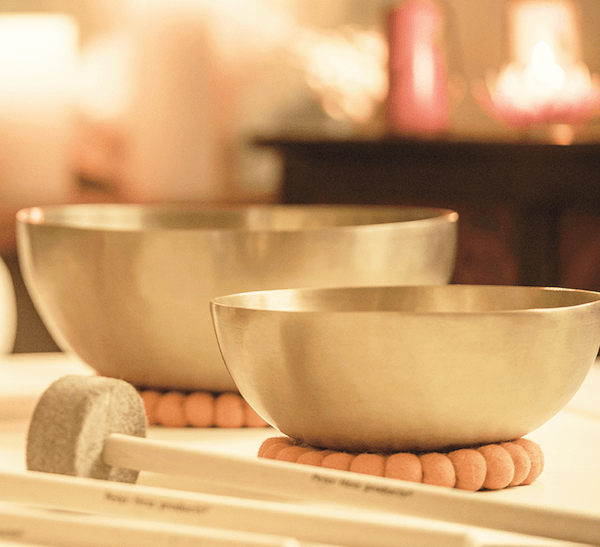
The most important facts in brief
- There are many different types of singing bowls. In this guide, we list the main types that are adapted to the needs of sound practice.
- The therapy singing bowl is the jewel among the singing bowls. It is mainly used in professional sound work.
- Singing bowls differ in shape, size and material used.
- The quality of the singing bowl decides decisively on its sound.
- Singing bowls are used in meditations, sound journeys, concerts or in sound therapy.
What are singing bowls and where do they come from?
Originally singing bowls come from the East Asian region – from China, Japan and Burma. Their predecessors were the so-called standing bells. These were hemispherical bronze vessels that stood on the ground with the opening facing upwards and were struck with a wooden mallet. Depending on the area of distribution, different types of singing bowls developed as we know them today. Mostly singing bowls are made of brass or bronze.
The singing bowls that are available in the West today usually come from India, Nepal, Tibet, Japan or China and sometimes show great differences in quality. This has a particular effect on their sound and vibration behaviour. Singing bowls are mostly used as an instrument in meditations, sound massages, sound therapies as well as in concerts or sound and fantasy journeys.
The sound massage, in which singing bowls are positioned and tapped on and around the clothed body, has been developed by Peter Hess since 1984 based on his experiences in Nepal for people in the West – it is therefore a Western method.
Which singing bowls are the best?
The high-quality therapy singing bowls from the Peter Hess® production are considered the “jewel of singing bowls”. Inspired by the healing power of the sounds Peter Hess encountered during his travels to Nepal, he began to build up his own production of singing bowls in 1989. To this day, Peter Hess® singing bowls are subjected to the highest quality criteria, so that they have an incomparable sound and vibration quality.
Only pure, high-quality metals (copper and tin) are used in Peter Hess® singing bowl production and no metals from waste products or scrap. The shells consist of a large proportion of tin. This high-quality raw material is often reduced or replaced by lead at other manufacturers because tin is much more expensive.
Peter Hess® therapy singing bowls are forged from a cast blank. The elaborate forging technique ensures that the shells vibrate much longer and more evenly. Even if a good pre-selection already takes place in Nepal and India, some singing bowls do not meet the requirements for the quality seal “Peter Hess® Therapieklangschale – professional therapeutic quality”. Therefore, all shells are again intensively tested for quality in Germany and classified into different quality grades.
How to find the right singing bowl for you
- Consider for what purpose you want to use the singing bowl predominantly.
- Listen to singing bowl audio samples online to find out which tones and frequencies you like.
- Pay attention to quality and check in particular the materials used and the manufacturing process – both have a significant effect on the sound.
- Set a budget that you are willing to invest in your new instrument.
- If you are unsure, talk to an expert and get advice on the different types of singing bowls.
What types of singing bowls are there?
To find out which singing bowls are the best for you, you need to understand what types of singing bowls there are and the differences between them. The pioneer in the work with singing bowls, Peter Hess, has developed since the foundation of the first own productions in 1989 different kinds of singing bowls, which are optimally adapted to the needs of the sound practice. They all captivate with their incomparable sounds that touch body, mind and soul. Be it for sound massage, sound meditations, fantasy journeys or concerts.
Therapy singing bowls
The therapy singing bowl is the jewel among the singing bowl types. It has excellent sound and vibration quality. This type of singing bowl is modelled on the Tibetan singing bowl and is characterised by a wide shape and a sound rich in overtones. They come in a wide variety of sizes up to about 4 kg.
The thickness of the edges can vary, but the traces of hammer blows on the surface are typical. A high-quality bronze alloy of 12 metals is the basis of these bowls, which are a masterpiece of blacksmithing. Only the best specimens receive the Peter Hess® Therapy Singing Bowl seal of quality after multiple quality checks. This type of singing bowl has been optimally adapted to the needs of professional sound work in more than 30 years of development work. Different types of singing bowls – each of which appeals particularly well to certain areas of the body – are used in a targeted manner: universal/joint bowl, pelvic bowl, heart bowl, head bowl, laryngeal bowl, solar plexus bowl and XL and XXL singing bowls.
Scope:
- Main instrument of the professional Peter Hess® sound work
- Sound exercises for self application
- Experiments and sound games with children
- Sound and fantasy journeys
- Concerts
The use of these excellent instruments is one of the three pillars on which the beneficial effects of Peter Hess® sound massage and Peter Hess® sound methods are based. Only in the interaction of the technique of the method, its principles and these extraordinary singing bowls can the full potential of the sounds unfold.
Special singing bowls
The special sound bowls are special constructions which are provided with a holding handle or a suspension eye through a small hole in the bottom of the bowl. They are available in the quality of therapy singing bowls and Himalaya singing bowls. The latter are slightly below the quality of the therapy singing bowls in their sound and frequency behaviour.
The handle of the Peter Hess® special singing bowls can be fixed inside or outside, the suspension eye can be screwed on. Handle and eyelet allow an absolutely safe use of the singing bowl in the body environment and on uneven body parts. This also makes it possible to move the singing bowl, as for example in the fascia sound massage. Especially in the field of work with the handicapped and in healing/medical professions, this special type of singing bowl has proven its worth as a supplement to the therapy singing bowls. The special singing bowls are available in three different types: Universal/articular bowl, heart bowl and pelvic bowl.
Scope:
- Complementary instrument for professional sound work
Zen Singing Bowls
The Zen singing bowls, Zen cymbals and Zen bells are cast from a high-quality metal alloy and then machined. The alloy contains a high proportion of tin, which produces the very clear and centered sound. The Zen singing bowls are available in three sizes: 6.5 cm, 9 cm and 10 cm in diameter. The Zen singing bowls, Zen cymbals and also the Zen bell are used complementarily in professional sound work. For example, the Zen singing bowl is mainly used around the head area or to direct the attention. Played individually or as a set, the Zen Singing Bowls, the Zen Cymbals and the Zen Bell are ideal for initiating and exiting meditations or concerts. But they can also be used wonderfully for setting fantasy journeys to music.
Note
Due to the high tin content, this singing bowl is very sensitive and can break like glass if it falls on a hard stone floor, for example.
Scope:
- Complementary instrument for professional sound work – mainly used in the body environment (e.g. closure, individual sound elements)
- sound and fantasy journeys, concerts
- Signal instrument in groups
Bolo singing bowls
The Bolo singing bowls are a special development for professional sound work. With these singing bowls, which are available in the quality of therapy singing bowls and Himalaya singing bowls, a certain hole cutout was punched out of the bottom. This special feature allows the singing bowl to be placed on uneven parts of the body such as the shoulders, knees, elbows or heels. The cut-out is chosen in such a way that an intensive and yet relaxing vibration radiation is guaranteed, which can be used specifically in the therapeutic area. The vibration goes more inward than with a conventional singing bowl. There are the Bolo singing bowls as different types of singing bowls: Universal/ joint bowl, pelvic bowl, heart bowl as well as laryngeal bowl and solar plexus bowl. This special singing bowl is also often used for self-application of sound exercises, because it allows an easy and safe positioning especially for the relaxation of knees or shoulders.
Scope:
- Complementary instrument for professional sound work
- Sound exercises for self application
- sound and fantasy journeys, concerts
Sangha Meditation Singing Bowls
Sangha meditation singing bowls captivate with a particularly clear, long-lasting, pleasant and carrying sound and a very fine vibration. Originally developed for meditations, fantasy and sound journeys, this singing bowl also turned out to be a wonderful addition to the therapy singing bowls for sound massages and in the context of sound pedagogic and sound therapeutic sessions. The Sangha Meditation Singing Bowls originate from the Therapy Singing Bowl production, but go through another four forging processes. These additional production steps require about four hours of extra work per kilogram of singing bowl. In addition, there is an elaborate surface treatment in which the shell is polished by hand for six hours. The result is a unique, room-filling sound character that is second to none. Sangha meditation singing bowls are available in five sizes: 700, 1,000, 1,500, 2,000 and 2,500 grams. Played as a set, the vibrations overlap to create an overall sound that cannot be achieved with any other type of bowl. The Sangha Meditation Singing Bowls and Therapy Singing Bowls can be ideally combined.
Note
The term “Sangha” means “meditating community”.
Scope:
- Meditations, sound and fantasy journeys, concerts, closing and closing of events
- Centering of groups
- Complementary instrument for professional sound work
- Sound exercises for self-application (especially for people who are highly sensitive)
- Aura Care
- Chakra Balancing
Assam Singing Bowls
The Assam singing bowls are, like the Zen singing bowls, cast from a high-quality metal alloy and then machined. They also contain a high proportion of tin, but due to their bowl-like shape they are somewhat more open and wider in sound than the Zen singing bowls. The Assam singing bowls are available in three sizes: 9.5 cm, 11 cm and 12.5 cm in diameter. The Assam singing bowls can be used as a supplement in professional sound work, for example to direct attention or to address the head area (usually only in the body environment). Played alone or in a set of 3, they offer a wonderful timbre for concerts, meditations or for setting fantasy journeys to music.
Note
Due to the high tin content, this singing bowl is very sensitive and can break like glass if it falls on a hard stone floor, for example.
Scope:
- Supplementary instrument for professional Peter Hess® sound work – mainly used in the body environment (e.g. conclusion, individual sound elements)
- sound and fantasy journeys, concerts
- Signal instrument in groups
Bengali singing bowls
The Bengali singing bowls are characterized by a characteristic tone that lies between that of a singing bowl and a gong. They are forged from bronze alloy, which consists of high quality metals. The forging process is not quite as complex as with the therapy singing bowls. After the forging process, the surface of these singing bowls is only worked on the inside and the rim, which gives them their special appearance. Since less different metals are needed for the production and also the manufacturing process itself is less complex, this type of singing bowl is comparatively cheap. It is also very robust, which is why it is particularly popular in kindergartens for free play and experimentation. The Bengali singing bowls are available in different sizes: from 9.5 cm diameter and a weight of about 200 grams up to 42 cm diameter and 7 kg. Especially the set of 3 from the smallest Bengali singing bowls offers a beautiful triad, which is especially suitable for concerts, meditations or for setting fantasy journeys to music.
Note
These singing bowls are not suitable for working on the body, especially for sound massage.
Scope:
- Experiments and free sound games (especially with children)
- Signal instrument in groups
- sound and fantasy journeys, concerts
Other types of singing bowls
With the increasing interest in the sounding bronze bowls, a growing market for singing bowls of different shapes, sizes and sound and vibration quality developed. Only a few of these instruments are suitable for sound work on the body – as practiced in sound massage and sound methods.
Basically, with regard to the type of singing bowl, a distinction must be made between bowls that are cast and those that are forged in the traditional way. In all types of singing bowls the raw material consists of a more or less high-quality bronze alloy, which consists of 5 to 12 different metals, with tin and copper forming the main part of the alloy.
The most widespread type of singing bowl, also called the classical singing bowl, is the so-called Tibetan singing bowl. However, the name is misleading as these bowls are usually made in India or Nepal. This type of singing bowl was the model for the Peter Hess® Therapy Singing Bowl developed by Peter Hess for sound massage.
Note
There are significant differences in quality between the many different singing bowls that are on the market. This guide should help you to find out which singing bowls are the best for you.
Singing bowl types - which singing bowl for which body region?
The therapy singing bowl series is available in different types of singing bowls, which address certain areas of the body particularly well and can be used by professionals accordingly. The individual types each have a characteristic shape and size as well as sound and vibration quality.
Peter Hess has succeeded in optimizing the manufacturing processes of the singing bowls in such a way that certain types of singing bowls have been created which address certain areas of the body particularly well. To put it simply, the lower sounds appeal mainly to the lower parts of the body, while the higher sounds are particularly perceptible in the upper half of the body.
The production of the individual types of singing bowls takes place today in each case in a family association. This specialization not only keeps the quality of the singing bowls at a consistently high level, but also secures the financial income of an entire family.
Note
Since the singing bowls are made by hand, each bowl always remains unique. This uniqueness is also reflected in the sound experiences – they are always individually different, just as every person is unique.
Universal / joint shell
As the name suggests, this singing bowl with its particularly extensive frequency spectrum between 100 and 2,800 hearts appeals well to the entire body. This makes it the ideal “beginner’s singing bowl”, which can be used universally.
In addition, it has a particularly intensive vibration behavior, which is why it can be used specifically in the context of sound massages and sound methods for the relaxation of blockages and tensions. These often become lodged in the joints – hence the additional name “joint shell”. Visually, this singing bowl has an open shape, has a thin rim and has a diameter of about 21 to 22 cm and a weight of 900 to 1,000 grams. Depending on which mallet is used to strike it, a different main range of sounds is produced.
Tip
In the context of professional sound work, but especially for private use, a mallet set consisting of a large, medium and small felt mallet, each with a different degree of hardness, is recommended. This opens up a particularly wide range of possible applications for this singing bowl, especially in the context of self-application of sound exercises. The universal/joint bowl is also one of the three most important singing bowls for professional sound work.
Small and large pelvic shell
The pelvic bowl, with its low tones of 100 to 1,000 hearts, appeals especially well to the lower abdomen and lower back. Their sound is often described as particularly “grounding”. Their deep sounds, which can be heard by striking them with a large felt mallet, appeal particularly well to the pelvic region. If, on the other hand, this type of bowl is made to sound with a medium-hard felt mallet, frequencies are heard that are perceived as particularly pleasant and intense in the area of the solar plexus (area above the navel).
The small pelvic bowl, which was developed primarily for working with children, weighs about 1,500 grams and has a diameter of 25 to 26 cm. It is also used in professional sound work for people for whom the large cymbal bowl is too heavy. For this has a stately weight of about 2,000 grams, with a diameter of 28 to 29 cm. The large version is one of the three most important singing bowls for professional sound massage.
Small and large heart bowl
The sound of the heart bowl is often described as very warm and bright. Since the heart area is a particularly sensitive part of the body, this bowl was designed to sound rather gentle in its vibration behavior. Here, too, there is a large and a small version.
The small heart bowl, originally developed for working with children, has proven to be a valuable addition to professional sound work with its bright tones. The large heart shell is easily recognizable by its thick rim. Weighing 1,300 grams, it has a diameter of 21 to 22 cm. The sound is clearly more voluminous than the small version. Depending on the mallet used – medium or small felt mallet – frequencies of 200 to 1,200 hearts can be elicited from this singing bowl. The small heart bowl, which is usually played with the small felt mallet, has a similarly thin rim as the universal bowl, weighs about 600 to 650 grams and has a diameter of about 16 cm.
Head shell
The head bowl is available in a flat, rather open form and in a bulbous form, where the walls are rather slightly inclined inwards. Both have a high pitched sound. That of the flat head shell is usually a little more agitated. This small, thin-walled singing bowl appeals especially to the forehead and sinuses and can be used with the appropriate background knowledge and training for specific problems. The bulbous head bowl also has its place in the wellness and beauty area, where its bright, soothing sounds support facial treatments of various kinds. The flat head bowl has a diameter of about 14 cm and a weight of 250 to 300 grams, the bulbous head bowl weighs with 260 to 320 grams somewhat more, is in the diameter with 12 cm however somewhat smaller.
Laryngeal
The laryngeal bowl was developed as a supplement for professional sound work. Because of its forged shape, it stands more securely and easily on the upper part of the chest, i.e. on the voice- and sound-forming part of the body, than the heart shell.
It has a diameter of 17 cm and a weight of 600 to 680 grams and is visually distinguished from the small heart shell by a thickened rim and a more open shape. Members of the healing and remedial professions such as remedial teachers, speech therapists or physiotherapists use these specifically for their work. In the cosmetic and wellness sector, this bowl is also known as the décolleté singing bowl and is used specifically to relax and stimulate this part of the body.
Solar plexus bowl
The solar plexus bowl, with a diameter of about 23.5 cm and a weight of 1,200 grams, forms a gradation between the universal bowl and the small cymbal bowl and was developed for use in the context of professional sound work.
With its characteristic sound and vibration pattern, it appeals above all to the upper abdomen and stomach area, a part of the body that in many people reacts particularly sensitively to stress. The sounds of this singing bowl can have a particularly relaxing and soothing effect here.
XL singing bowl
With a diameter of 35 to 53 cm and a weight of 5 to 12 kg, the XL sound bowl is a real heavyweight. It is often used to get into the right mood, but can also be used by appropriate professionals to stimulate blood circulation or to relax or “straighten up” the spine. Accordingly, it is often found in physiotherapy and occupational therapy practices or even clinics. In addition, most clients can stand in this singing bowl and (ideally) experience how the sound vibrations rise from the soles of the feet and flow through the entire body – a very special experience.
XXL singing bowl
The XXL singing bowl is a real masterpiece of the blacksmith’s art. It is extremely difficult to produce a singing bowl in the high quality of a therapy singing bowl with a size of 53 to 84 cm in diameter. This is because the brittle bronze becomes more fragile with increasing size and weight and breaks easily during the forging process. With a weight of 60 kg and a diameter of over 80 cm, Peter Hess has succeeded in producing the largest forged singing bowl in the world.
The XXL singing bowls are also available from 12 kg. It is not only an extraordinary piece of jewellery, but its voluminous sound also enables very special sound experiences.
Tones and sound characteristics of singing bowls
The tones of the singing bowls are created when you place the singing bowl on the flat of your hand and strike it on the upper edge with a mallet or rub it with a grater. Singing bowls have very diverse tones and vibrations. Depending on the type of singing bowl and the mallet used, low or high tones unfold. The larger the singing bowl, the deeper its tone usually is.
Forged singing bowls transport the tones and vibrations better than cast singing bowls. The sound lasts longer and the vibrations can be felt on the body.
Tip
Felt mallets dampen the tones of the singing bowl, which is especially important for sound massage. The sound can thus gently spread through the body and lead to deep relaxation.
